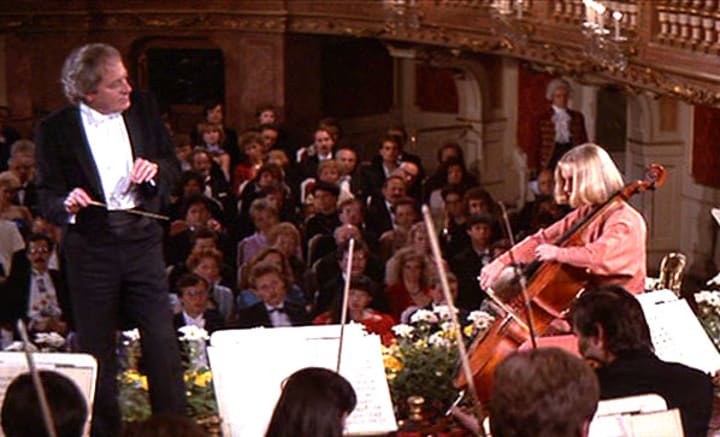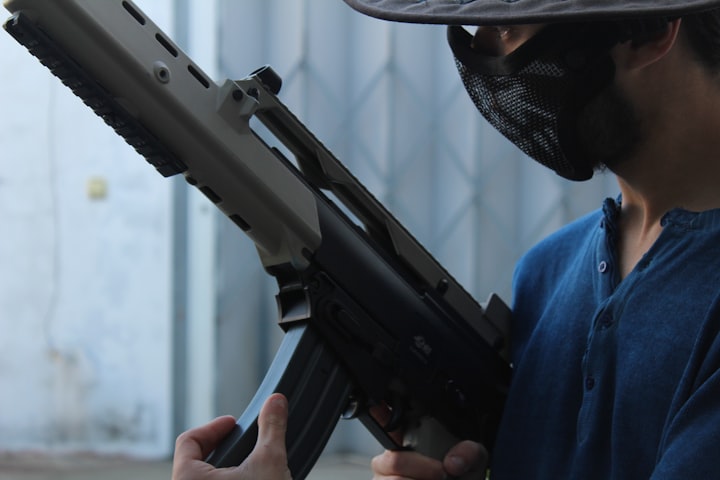Bond: The Living Daylights At 30
Looking back at Timothy Dalton's debut as 007.

Once upon a time, the James Bond film series was in trouble. Despite financial success, the series seemed to have sputtered somewhat with the last two Roger Moore Bond outings. When Moore confirmed he was leaving the role in December 1985, fans of the nearly 25-year-old franchise may have been left wondering what would happen to the series next. The answer came in the summer of 1987 when not only a new Bond film called The Living Daylights appeared but a new Bond as well. His name? Dalton. Timothy Dalton. The result was to be the beginning of a new era for the series.
In no small smart, that fact is owed to Dalton himself. If the idea was to cast someone close to writer Ian Fleming's description of the character then Dalton was perfect choice with his scalp of wild black hair, piercing blue eyes, not to mention being physically fit as well. Just as important, and something that perhaps set Dalton apart from many of his predecessors was his acting chops and Dalton approached the role as an actor rather than as a star. A perfect example of this is about midway through the film at the Vienna fair ground where Dalton's Bond, having lost the murderer of a fellow agent in the crowd, stands bewildered for just a moment. The look on his eyes, the expression on his face even, says everything. No need for the often cringe-worthy one-liners of the Moore era or a piece of over the top gadgetry in that moment. It's Dalton as Bond in a rare moment that wouldn't be seen again in another Bond until Daniel Craig's era two decades later.
Which isn't to say that he couldn't play other aspects of the role, far from it in fact. Gone was the "superhero in a tuxedo" that marked so much of the Moore era's later days with stuntmen filling in for the leading man. Dalton threw himself into the film's action sequences (sometimes literally by all accounts) and they are the better for it. If nothing else, Dalton could throw a good punch and, unlike Moore, looks as if he actually knows what he's doing. The nature of the humor changed as well with the film becoming more serious in tone but also retaining a more intelligent, dare one say mature, sense of humor. It was at once both a back to basics approach to the role as well as one that combined it with elements that had become a prerequisite at this point in the series and it worked a treat.

Bond (Timothy Dalton) and Kara Milovy (Maryam d'Abo)
Another major change in tone came from its lead female character, Czech cellist Kara Milovy (played by Maryam d'Abo). Maryam d'Abo may not have had a lot of acting experience before she made this film but she is a good actress, more than capable of banishing the memory of Tanya Roberts whose performance in the previous film A View to a Kill ranks as perhaps the nadir of the franchise. In large part, that's because her character goes far beyond being just eye candy. She's an average woman, an innocent brought into it all by a man she cares for deeply and whom she owes everything to, who is drawn into this world of intrigue and danger. Bond isn't just a dominating figure who must seduce her as with Sean Connery's Bond in From Russia With Love, he's the man who has brought her to a point where she is free to show off her talent for the entire world to see. Her gradually developed relationship with Dalton's Bond takes the pair for distant enemies, allies, mistrust to romance in one of the rare instances of even a semi-believable relationship once the series had moved beyond its early days.
The cast of the film does have a serious flaw, though not a fatal one, in the form of its villains. While both Jeroen Krabbe and Joe Don Baker are good actors, this simply wasn't to be their shining moment. Any menace that Krabbe's General Koskov might have had is ruined by the fact that he is constantly kissing everyone on the cheek which, maybe with a slightly different script or tweak to the performance, might have worked otherwise. Baker's Brad Whitaker is almost too weird to be a serious villain, as he ranges from the ultimate military historian to the craziest and is always aiming to go a little over the top as well. At least unlike Koskov, he does have a great final showdown with Bond during the fantastic gun battle at the films end. Not that either character or performance is necessarily bad in either case but simply not quite there.
The supporting cast though is pretty solid. Andreas Wisniewski has a wonderful presence as the menacing assassin Necros despite being an obvious take on Robert Shaw's Red Grant in From Russia With Love. The always dependable John Rhys-Davies and Art Malik hand in solid performances are potential villains turned allies in the middle and latter parts of the film. Thomas Wheatley's Saunders is another highlight as the ultimate bureaucratic agent who serves as something of a foil for Dalton's Bond. There's also the brief but solid performances from Robert Brown's M, Desmond Llewelyn in his iconic role as Q, and for (for the final time) Geoffrey Keen as the British Minister of Defence who all add a wonderful sense of continuity to the film, connecting it with the rest of the series rather nicely.

The Aston Martin in action.
Along with Dalton's Bond, the changes to the series can be felt in the plot especially. After years of outrageous plots and over the top action sequences, there is a strong sense of at least attempted realism restored here. The plot is one of the series most intriguing, painting a portrait of the world towards the end of the Cold War even as East and West still vied with one another despite the cooling of tensions. It's fair to say that the nature of the plot can be somewhat convoluted as it seeks to draw on elements that range from Cold War defectors to the war then taking place in Afghanistan (in which the Western powers supported groups which they would one day invade the same country to fight), diamond and opium smuggling, and the world of classical music even. Substance triumphs over style here and, after so much of the Moore era, it's a breath of fresh air.
Even better, the film contains plenty of action along the way including some highlights from the entire franchise The opening sequence involving a 00 training exercise and later chase on the island of Gibraltar was without a doubt the best the series had presented since the incredible ski jump of The Spy Who Loved Me a decade previously. The film also saw the return of Aston Martin to the franchise with a gadget laden car that gave the film one of its most iconic moments as well as a solid piece of vehicular action. The film's other action set-pieces ranging from a roof top chase in Morocco, a battle at a Soviet airbase, a fight on a cargo net dangling out of a plane, and a gun battle between Bond and Whitaker all prove to be thrilling without resorting to the sight gags along the lines of Moonraker's infamous double taking pigeon. The film also finds a nice balance between plot exposition and action, making The Living Daylights one of the better paced Bond outings.

Composer John Barry conducts in a rare cameo appearance in the film.
The film also has one other thing in its favor: its score from the legendary composer John Barry. Largely based around a number of action cues involving the film's title song by A-ha, the Pretenders song Where Has Everybody Gone?, and the James Bond Theme with Barry's normal orchestral tracks being given a synthesizer feel. The score though might be at its best in the quieter, even romantic moments where Barry based his score on the Pretenders If There Was A Man (which plays over the end credits) which gives a wonderful sense of atmosphere to the scenes between Bond and Kara. While The Living Daylights would be the composer's last Bond film before his effective retirement in the early 2000s and his 2011 death, it would see the composer going out on a high with one of his most memorable Bond scores.
All of which was to make The Living Daylights both a box-office and critical success when it was released in the summer of 1987. Even after three decades it holds quite well and better than some of the films that both proceeded and followed it. Dalton's era was to be cut short due to legal issues that came following the release of his second Bond outing Licence To Kill in 1989, a film which saw the series going even darker and Dalton developing his Bond closer to Fleming's original conception. The Living Daylights stands then as a mix between the more serious Bond that Dalton pursued and the elements that the film series had introduced, something that makes the film all the better.
About the Creator
Matthew Kresal
Matthew Kresal was born and raised in North Alabama though he never developed a Southern accent. His essays have been featured in numerous books and his first novel Our Man on the Hill was published by Sea Lion Press in 2021.






Comments
There are no comments for this story
Be the first to respond and start the conversation.